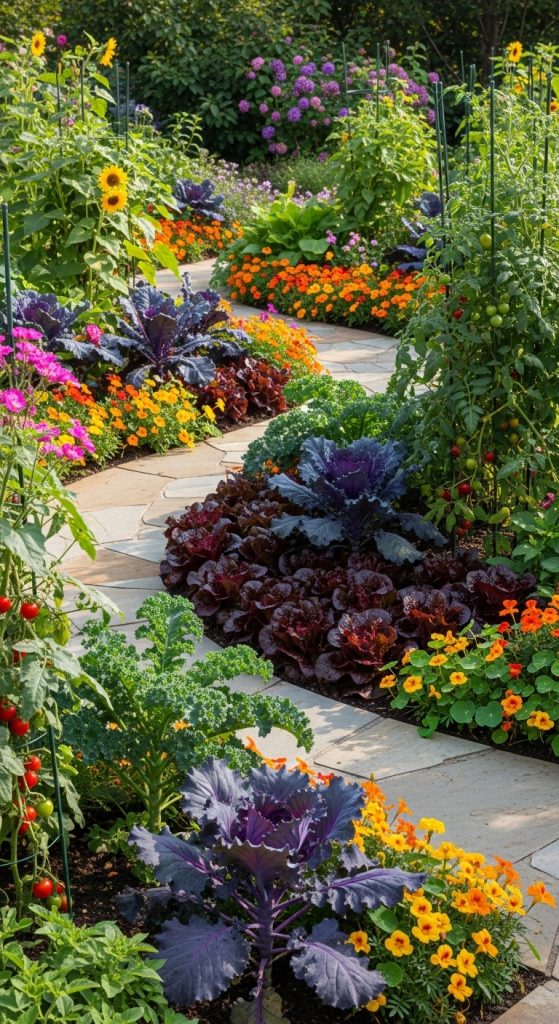Growing your own vegetables is one of the most rewarding ways to connect with nature and enjoy fresh produce straight from your backyard. Whether you have a large yard or a compact outdoor space, there are endless creative ways to design a functional and beautiful vegetable garden. Outdoor vegetable gardens not only provide a steady supply of organic food but also enhance your home’s landscape with greenery and life. Below are ten detailed outdoor vegetable garden ideas that cover preparation, materials, and maintenance tips to help you cultivate a thriving garden throughout the growing season.
1. Raised Bed Vegetable Garden
A raised bed vegetable garden is one of the most efficient and organized ways to grow vegetables outdoors. Raised beds improve drainage, warm up the soil faster in spring, and keep weeds at bay. They also make it easier to manage soil quality and prevent compaction.
Preparation and Materials:
You will need untreated wood planks or metal panels, soil mix (topsoil, compost, and organic matter), a shovel, and a level. Choose a sunny spot with at least six hours of direct sunlight. Assemble rectangular or square frames about 12 to 18 inches deep. Fill with nutrient-rich soil mix and plant your chosen vegetables such as tomatoes, carrots, or lettuce.
Add mulch around the plants to retain moisture and reduce weeds. Raised beds are ideal for beginners and urban gardeners, offering a neat layout that can fit in any outdoor space while ensuring consistent yields and easy maintenance.
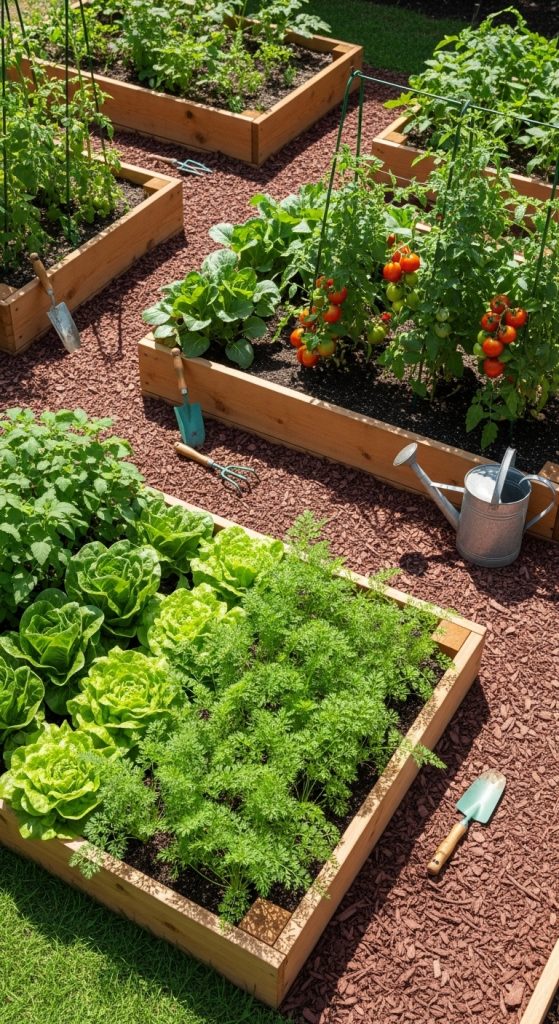
2. Vertical Vegetable Garden
Vertical gardens are perfect for small spaces, balconies, or areas with limited ground space. By using vertical structures, you can grow vegetables upward instead of outward, making efficient use of space.
Preparation and Materials:
Collect wooden pallets, hanging planters, or trellises. Use lightweight soil and containers with proper drainage. Vegetables such as cherry tomatoes, beans, peas, and lettuce thrive in vertical arrangements. Position the structure against a sunny wall or fence to maximize sunlight exposure.
Secure the planters properly to prevent tipping or shifting. Water regularly since vertical gardens can dry out faster. Vertical gardening not only saves space but also enhances air circulation around plants, reducing disease risks. This style also adds an aesthetic element to your backyard by transforming walls into lush, green living art.

3. Container Vegetable Garden
Container gardening offers flexibility, making it ideal for patios, decks, or small outdoor spaces. You can grow a wide range of vegetables in containers, from peppers and herbs to leafy greens and dwarf tomatoes.
Preparation and Materials:
Choose large containers with drainage holes, potting mix, and organic compost. Terracotta pots, plastic planters, or fabric grow bags all work well. Make sure to select vegetables suited for container growth, such as radishes, lettuce, spinach, and bush beans. Place containers in an area with at least six hours of sunlight per day.
Water daily during hot weather and fertilize every two weeks with a balanced liquid fertilizer. Rotate the pots occasionally for even light exposure. Container gardening gives you full control over soil conditions and pest management while allowing you to easily move plants according to weather or sunlight needs.
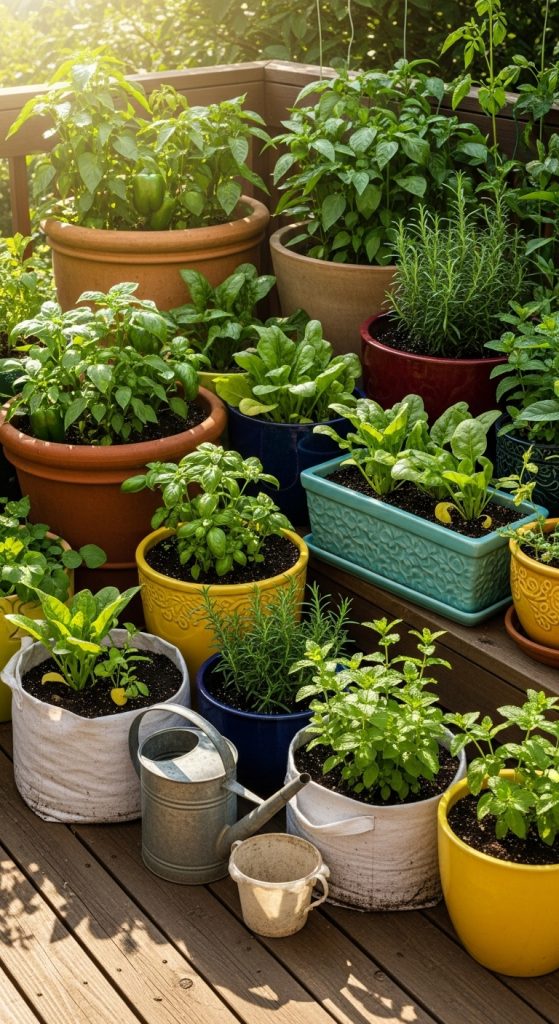
4. Square Foot Gardening
Square foot gardening is a systematic and space-efficient method that divides a garden bed into small square sections. Each square is dedicated to a specific vegetable type, making planting and harvesting easier.
Preparation and Materials:
You’ll need a raised bed, grid dividers (wood or string), compost-rich soil, and various vegetable seeds. Mark out 12-inch by 12-inch squares in your raised bed. Plant a different vegetable in each square according to spacing requirements. For example, one tomato plant per square or nine spinach plants per square.
Water regularly and add compost between plantings to maintain fertility. This approach minimizes waste, controls weeds, and maximizes production in a small space. It’s an excellent system for beginners who want a well-organized and high-yield garden with minimal maintenance.

5. Companion Planting Garden
Companion planting involves growing certain vegetables together that benefit each other by enhancing growth or deterring pests. This method creates a balanced ecosystem that promotes plant health naturally.
Preparation and Materials:
Plan your garden layout based on companion pairs. Examples include tomatoes with basil, carrots with onions, and beans with corn. You’ll need garden soil enriched with compost, labels for plant identification, and mulch. Prepare garden rows or beds and interplant compatible vegetables in alternating patterns.
Avoid combinations that compete for nutrients, such as beans and onions. Companion planting reduces the need for chemical pest control while improving soil fertility and yield. It’s an eco-friendly and sustainable gardening method that encourages biodiversity and natural balance in your outdoor vegetable garden.

6. Herb and Vegetable Combination Garden
Combining herbs and vegetables in one garden adds functionality and fragrance to your space. Herbs not only complement vegetables in the kitchen but also repel insects and attract pollinators.
Preparation and Materials:
Select a sunny spot with well-draining soil. Mix organic compost into the ground before planting. Combine vegetables like peppers, tomatoes, and lettuce with herbs such as basil, rosemary, and parsley. Use small terracotta pots for herbs or interplant them directly between vegetable rows.
Keep herbs trimmed regularly to encourage growth and prevent them from overshadowing nearby plants. Herbs act as natural pest deterrents, while vegetables benefit from the improved ecosystem. This combination garden enhances flavor, utility, and aesthetics in any backyard setting.

7. Greenhouse Vegetable Garden
A greenhouse garden allows year-round vegetable cultivation, protecting plants from harsh weather and pests. It creates a controlled microclimate suitable for growing delicate or off-season vegetables.
Preparation and Materials:
You will need a greenhouse structure (polycarbonate, glass, or plastic), shelves, pots, and climate control tools like thermometers and fans. Prepare nutrient-rich soil or raised beds inside. Suitable vegetables include tomatoes, cucumbers, peppers, and leafy greens. Maintain consistent ventilation and humidity to prevent fungal diseases.
Regularly check temperature levels to avoid overheating during sunny days. Water early in the day to ensure plants dry before nightfall. A greenhouse vegetable garden offers the advantage of continuous harvest and protection, making it ideal for serious gardeners aiming for productivity and sustainability.
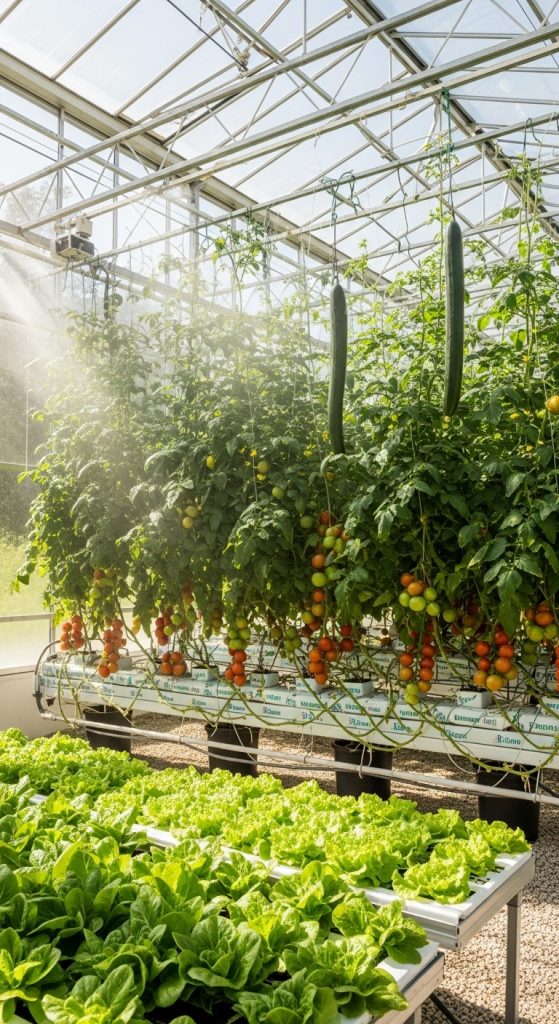
8. Backyard Raised Row Garden
A raised row garden combines the simplicity of traditional gardening with the structure of raised planting mounds. It provides good drainage and improves soil aeration.
Preparation and Materials:
Mark the garden area and till the soil. Create long raised rows about 12 inches high and 18 inches wide. Add compost, aged manure, and organic fertilizer to enrich the soil. Plant vegetables such as beans, lettuce, carrots, or onions along each row, leaving space for walking paths.
Mulch heavily to conserve moisture and suppress weeds. This system works well for larger outdoor spaces, producing high yields with minimal soil compaction. Raised row gardening promotes strong root development and easy maintenance, making it an excellent choice for family gardens.

9. Hydroponic Outdoor Vegetable Garden
Hydroponic gardening allows vegetables to grow in nutrient-enriched water instead of soil. Outdoor hydroponic systems can produce fast-growing and healthy plants using minimal space and water.
Preparation and Materials:
You’ll need a hydroponic setup (such as a nutrient film technique or deep water culture system), nutrient solution, growing trays, and seedlings. Position the system in a sunny area with some shade protection during extreme heat. Vegetables like lettuce, spinach, basil, and tomatoes perform exceptionally well in hydroponic systems.
Monitor pH levels and nutrient concentrations regularly. Ensure continuous water circulation to prevent stagnation. Although hydroponic gardening requires initial setup and monitoring, it offers efficient growth, pest control, and water conservation benefits, making it a modern solution for sustainable outdoor vegetable production.
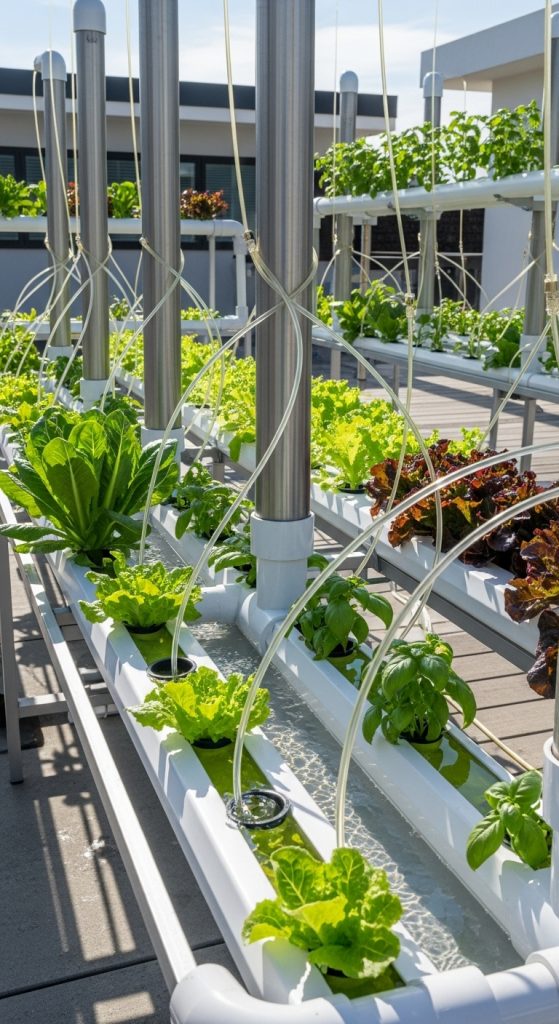
10. Edible Landscape Garden
An edible landscape blends vegetables, herbs, and ornamental plants to create a functional yet visually appealing garden. It turns your outdoor space into both a productive and decorative environment.
Preparation and Materials:
Plan a landscape design that integrates edible plants into flower beds, borders, and pathways. Use colorful vegetables like red lettuce, kale, purple cabbage, and cherry tomatoes for visual interest. Combine them with herbs and ornamental flowers to create texture and contrast.
Prepare the soil with organic compost and mulch. Group plants based on sunlight needs and water them consistently. This approach maximizes beauty and productivity while promoting biodiversity. An edible landscape garden adds charm and sustainability to any backyard, merging aesthetics with nutrition.
